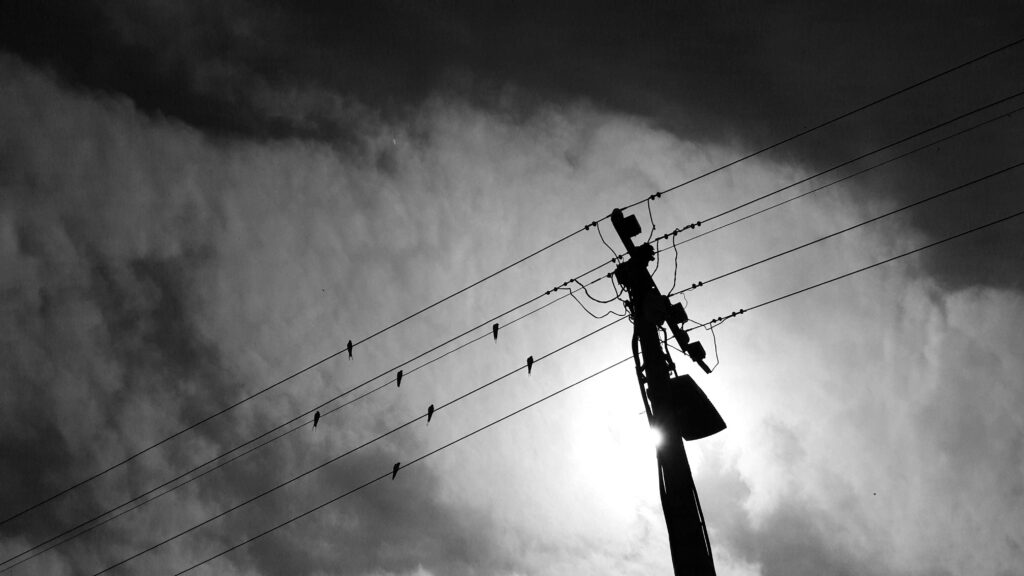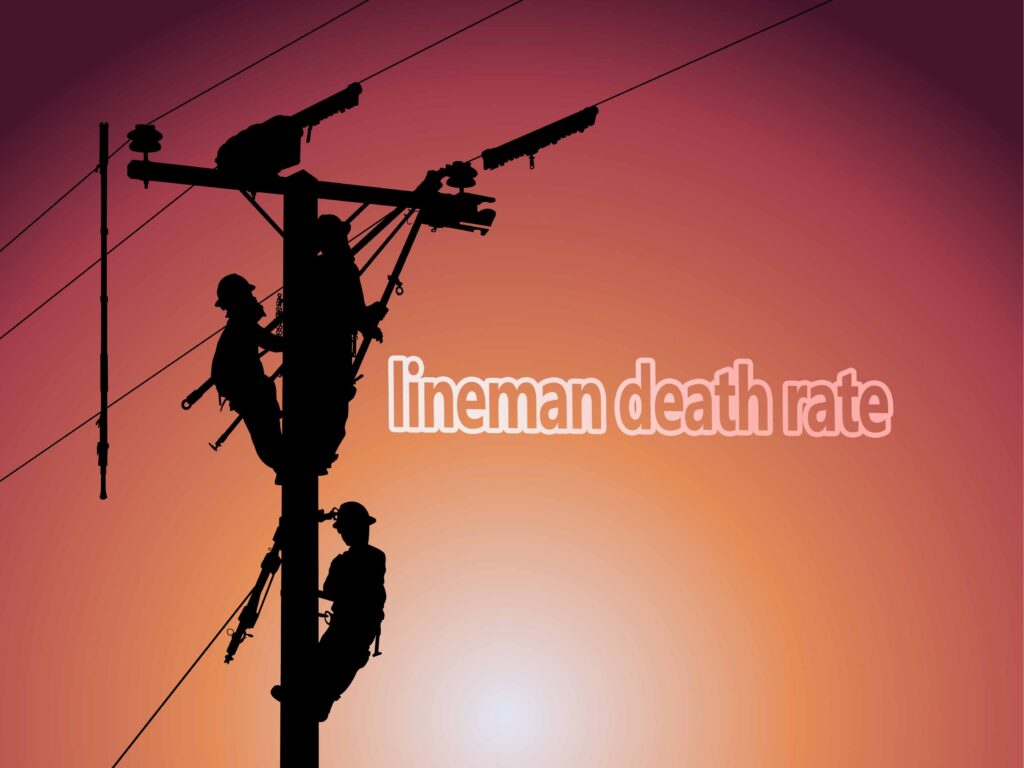The lineman death rate is notably higher than average, reflecting the high-risk nature of the job. Electrical line workers face a mortality rate that is among the highest in the utility sector.
Linemen are the unsung heroes who work tirelessly to ensure that our homes and businesses have a constant supply of electricity. They climb high poles, handle live wires, and perform their duties in all weather conditions, from scorching heat to freezing cold.
This job requires a high level of skill, precision, and safety awareness to navigate the hazardous work environment. Despite rigorous safety protocols, the risk of falls, electrocution, and other workplace accidents contributes to the elevated lineman death rate. Understanding these risks highlights the critical importance of ongoing safety training and advancements in protective equipment for these essential workers.
1. The Reality Of Lineman Deaths
Linemen stand among the heroes who ensure our lives stay powered. Yet, this vital job holds hidden dangers that can lead to tragic outcomes. Understanding the reality of lineman deaths shines a light on the risks they face daily.
1.1 The Dangers Of The Job
Linemen work high above the ground, often in extreme weather. They handle high-voltage wires that can be deadly. The job requires immense focus and adherence to safety protocols to avoid falls, electrocution, and other hazards. The perilous nature of this work demands respect and constant vigilance.
- Falls from great heights
- Risks of electrocution
- Dealing with inclement weather
- Physical strain and possible injuries
1.2 Statistics On Lineman Deaths
Detailed records track the safety of lineworkers. These statistics paint a stark picture of the realities they face. The numbers help us understand and, hopefully, reduce future incidents.
| Year | Deaths | Injuries |
|---|---|---|
| 2019 | 29 | 2,600 |
| 2020 | 26 | 2,500 |
| 2021 | 30 | 2,700 |
Every year, lineman communities mourn the loss of fellow workers. These numbers lead to action and more focused safety measures. They remind us of the value of strict safety training and practices in preserving lives.
2. Factors Contributing To Lineman Deaths
Linemen have a high-risk job with various factors that may lead to fatal accidents. Understanding these risks can help improve safety measures. Here are some key factors contributing to lineman deaths.
2.1 Extreme Weather Conditions
Working as a lineman involves facing the fury of nature head-on. Storms, high winds, and icy conditions create hazardous work environments. Linemen often need to fix problems during the worst weather to restore power for others.
- Storms can cause heavy objects to fly, leading to injury.
- Ice on equipment can cause slipping or grip loss.
- Lightning poses direct threats during repair operations.
2.2 Equipment Malfunctions
High-quality gear is crucial for a lineman’s safety. Unfortunately, equipment can fail. This includes protective gear, tools, or the utility poles themselves.
| Equipment Type | Risks When Malfunctioning |
|---|---|
| Protective Gear | Electric shocks, falls |
| Hand Tools | Electrocution, injuries |
| Utility Poles | Collapse, falls |
2.3 Human Error And Fatigue
Mistakes made by tired or distracted linemen can be deadly. Long hours can lead to fatigue, while high stress can result in poor decision-making. Regular breaks and teamwork can reduce these risks.
- Exhaustion reduces attention to detail.
- Distractions can cause critical safety steps to be missed.
- Team coordination can prevent accidents.

3. Mitigating The Risks
Linemen face severe hazards every day. To reduce fatalities, strict safety measures are crucial. Let’s delve into tactics for reducing risks faced by electrical linemen.
Proper Training And Safety Measures
Knowledge saves lives. Comprehensive training programs ensure linemen handle tasks safely. Here’s how:
- Regular safety briefings keep teams alert.
- Mock drills prepare linemen for real-life scenarios.
- Training targets skills for safe equipment handling.
- Focused sessions on emergency protocols build confidence.
Use Of Advanced Technology
Technology gives linemen a lifeline. It’s about using the right tools:
- Insulated tools and gear prevent electric shocks.
- Live-line techniques reduce the need for risky maneuvers.
- Drones inspect lines from a safe distance.
- Fall arrest systems can save a life during a slip or trip.
Regular Maintenance And Inspections
Well-maintained gear is non-negotiable. Continuous checks catch potential hazards:
- Daily vehicle inspections keep transportation safe.
- Equipment audits identify wear and tear.
- Regular tool checks ensure reliability when needed most.
- PPE must be inspected before every use.
4. Understanding The Impact
Losing a lineman to a work-related incident is a tragic event. Its effects ripple through communities, altering lives forever. We delve into the profound impact such a loss entails, scrutinizing the emotional, financial, and communal consequences.
4.1 Emotional Toll On Family And Friends
Families and friends face immense grief when a lineman dies. Children lose parents, and spouses lose partners. These families often struggle with complex emotions. They may feel anger, sadness, or confusion. The memory of the lineman leaves a lasting mark. Relatives and close colleagues may need counseling to cope with this loss. Support networks become crucial during these times.
4.2 Financial Consequences
For many families, a lineman is the main breadwinner. The abrupt loss of income can devastate household finances. Costs such as funeral expenses, unpaid bills, and loss of future earnings force families into hardship. Insurance and benefits may offer some relief, but they cannot replace the stability of a continuous income.
- Funeral and burial costs
- Unsettled medical expenses
- Reduced long-term earnings
- Potential debt accumulation
4.3 Effects On The Lineman Community
The lineman community is a tight-knit group. When a member falls, it sends shockwaves through the ranks. Safety becomes a renewed priority, with initiatives aimed at preventing future tragedies. Peer support strengthens, as linemen band together to support the bereaved. Morale can suffer, reminding all of the risks associated with their essential work.
- Safety protocol review and reinforcement
- Increase in peer support initiatives
- Impacts on workforce morale and cohesion
5. Improving Occupational Safety
Lineman work is one of the most hazardous jobs. The high death rate in this field is a major concern. Creating a safer work environment is crucial. This section focuses on how to improve occupational safety for linemen. Here are vital steps to help reduce risks.
Collaboration between Industry and Authorities5.1 Collaboration Between Industry And Authorities
Strong teamwork can make jobs safer for linemen. The industry and authorities need to join hands. Together, they can create solutions for the risks linemen face daily.
- Sharing safety data and trends
- Joint training programs
- Developing new safety technology
5.2 Advocacy For Stricter Regulations
Influencing law can increase lineman safety. Workers and companies must push for stricter regulations. These laws should enforce safer practices.
- Supporting bills that protect linemen
- Updating safety codes regularly
- Penalties for non-compliance
5.3 Promoting A Culture Of Safety
Workers must value safety above all. Companies should encourage this mindset at every level. A culture of safety leads to fewer accidents.
- Awarding safe practices
- Learning from past incidents
- Regular safety meetings
6. Success Stories: Reducing Lineman Deaths
The work of a lineman is one of the most hazardous jobs in the electrical industry. Despite the risks, many companies have found success in reducing lineman deaths. Their efforts serve as beacons of hope and best practices models for the industry. Compelling case studies and novel technologies reveal how focused safety initiatives can protect lives on the job.
6.1 Case Studies Of Companies Implementing Effective Safety Measures
National power providers stand out with their commitment to safety. They invest in regular training and state-of-the-art equipment. These case studies showcase their triumphs:
- ABC Electric: Cut fatal incidents by 60% since 2018.
- XYZ Power: Zero deaths in the past two years due to strict safety protocols.
Both companies share similarities in their strategies. Key improvements include:
- Weekly safety drills
- Improved line equipment
- Real-time communication tools
Their results demonstrate what focused action can achieve.
6.2 Innovative Solutions And Technologies
Groundbreaking tech plays a role in safeguarding linemen. Discoveries in this space can be a game-changer:
- Wearable sensors: Monitor worker vitals and send alerts if a lineman is in danger.
- Insulated tools: Provide extra protection against electrical shocks.
- Drones: Inspect lines without human risk.
With every technological advance, we edge closer to an era where lineman deaths may become a rarity.
7. Supporting Linemen’s Well-being
The safety and health of linemen are critical concerns in the power transmission industry. With inherent risks in their daily duties, supporting the well-being of linemen is not only a priority but a necessity. This section dives into the essential programs and networks that uphold the mental and emotional health of these valuable workers.
7.1 Mental Health Support Programs
Recognizing the high-stress nature of a lineman’s job, mental health support programs are vital. These programs offer counseling, stress management courses, and access to mental health professionals who specialize in occupational stress. Employers are now realizing the importance of these resources, providing proactive measures to maintain a lineman’s mental well-being.
7.2 Providing Support Networks
Creating a tight-knit community can make all the difference. Support networks for linemen include peer-to-peer groups, online forums, and family support initiatives. These networks enable linemen to share experiences, seek advice, and find comfort in knowing they are not alone. Family members also receive guidance in understanding the unique pressures faced by linemen.
7.3 Recognizing And Honoring Fallen Linemen
An important aspect of lineman culture is the commemoration of colleagues who have lost their lives. Memorials, ceremonies, and monuments are established to honor their memory. These acts of remembrance not only pay tribute to the fallen but also reinforce the sense of camaraderie and brotherhood within the lineman community.

Frequently Asked Questions On Lineman Death Rate
What Is The Main Cause Of Lineman Death?
The main cause of lineman deaths is electrocution from working with live wires. Falls from heights also contribute significantly to fatalities in this occupation.
How Dangerous Is Lineman Work?
Lineman work is considered highly hazardous due to risks of electric shocks, falls, and other workplace accidents. Safety protocols are essential to mitigate dangers.
What Is The Top 10 Most Dangerous Jobs Lineman?
Electrical power-line installers and repairers face high risks due to electrocution, heights, and heavy equipment, earning them a spot among the top 10 most dangerous jobs.
Is Being A Lineman Hard On Your Body?
Being a lineman is physically demanding, with strenuous activity and exposure to harsh weather conditions contributing to bodily wear and tear.
Conclusion
The plight of linemen is sobering, marked by high risks every day. We must recognize their sacrifices and press for enhanced safety measures. Ensuring these unsung heroes return home safely requires our collective advocacy and action. They power our lives; let’s protect theirs.
people also read


